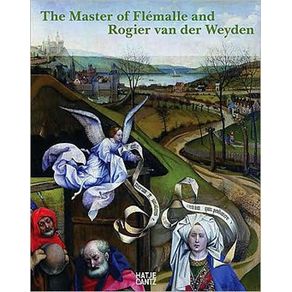Robert Campin, also known as the Master of Flemalle (c. 1375-1444), and his pupil Rogier van der Weyden (c. 1399-1464) were two of Europe's greatest Northern Renaissance painters, though art history has been slow to catch up with them. Along with Jan and Hubert van Eyck, Campin and van der Weyden are now considered synonymous with the development of Old Netherlandish painting, having given oil painting some of its earliest virtuoso works. Campin's work marks the shift from manuscript painting to Realist painting, both in its subject matter and in the artist's use of oils to mold signature shapes such as brocades or the teardrops on the cheek of a grieving Madonna. The Merode Altarpiece" (c. 1425) at The Cloisters in New York is perhaps Campin's best-known painting--but both his and van der Weyden's reputations have fluctuated, as the work of each has been attributed to the other. (When van der Weyden died in 1464 he was the most famous painter in Europe, but today not one painting is decisively attributed to him.) This volume collects more than 50 masterpieces from the most important museums in the world and presents them side by side to encourage direct comparison. No monograph on either artist, or indeed on any early Netherlandish artist, offers such exacting reproduction and examination of this hotly debated body of works.



